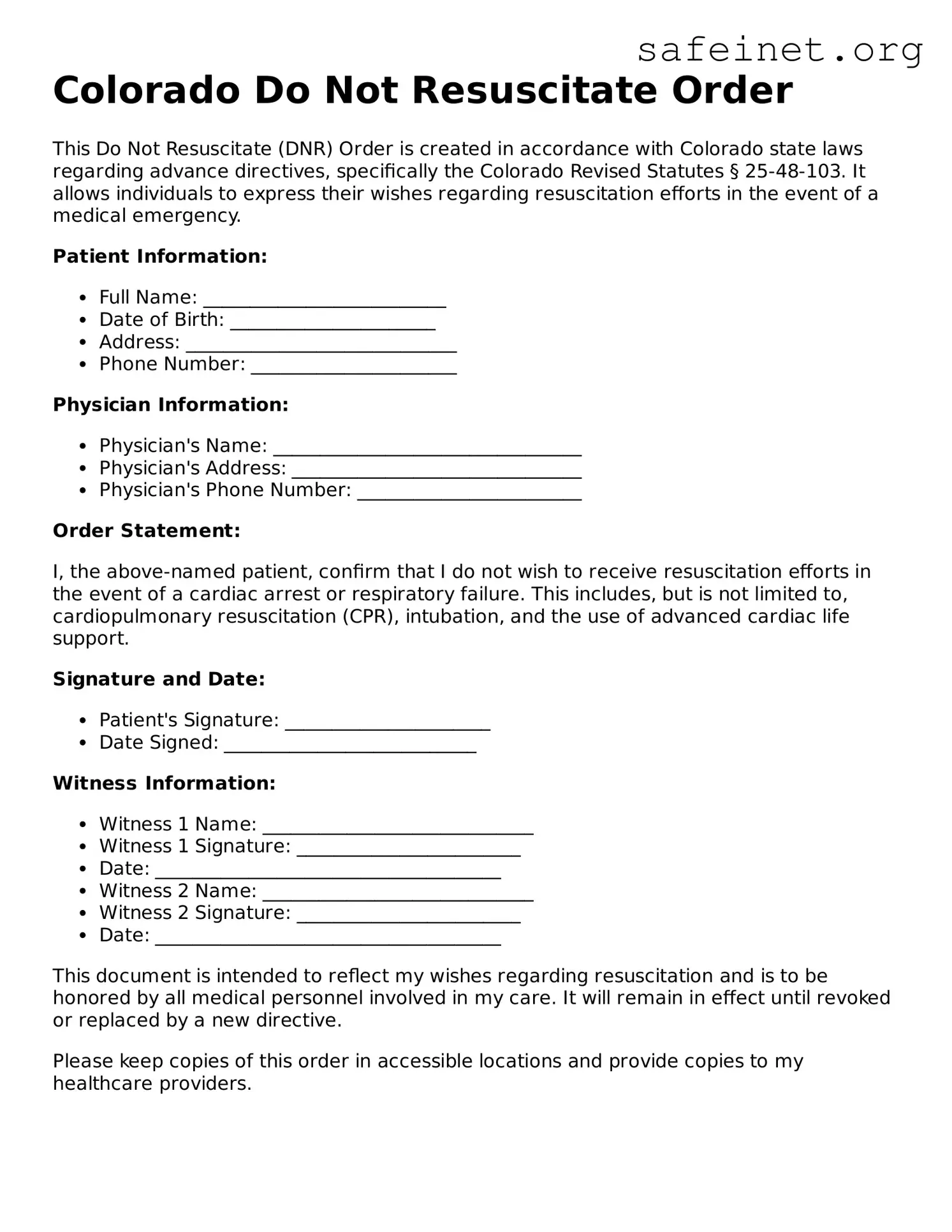What is a Colorado Do Not Resuscitate Order (DNR) and why is it important?
A Colorado Do Not Resuscitate Order (DNR) is a specific medical order that indicates a person's wish not to receive resuscitation measures in the event of cardiac arrest or respiratory failure. This could include CPR, intubation, or defibrillation. The importance of a DNR lies in respecting the patient's autonomy regarding their medical treatment. It ensures that individuals who do not wish to be resuscitated can make this clear in advance, relieving their loved ones and medical professionals from making difficult decisions during an emergency.
Who can issue a DNR order in Colorado?
In Colorado, a DNR order can be issued by a physician or other licensed healthcare provider. To qualify, the patient must be an adult capable of making healthcare decisions, or, in cases involving minors, a parent or legal guardian. It is crucial that the individual understands the implications of a DNR and discusses their wishes with their healthcare provider. Proper communication ensures that the DNR accurately reflects the individual's intentions and is properly documented within their medical records.
How can someone obtain a DNR order in Colorado?
To obtain a DNR order in Colorado, a patient must first have a conversation with their healthcare provider about their preferences regarding resuscitation. If both parties agree, the healthcare provider will complete the DNR order form, which must be signed by both the patient (or their representative) and the doctor. After it is signed, the DNR form should be kept in a visible location, such as on the refrigerator or next to the bed, to ensure it can be easily found by emergency personnel if needed.
What should individuals do if they change their mind about a DNR order?
If an individual changes their mind about their DNR status, they can revoke the order at any time. It is vital to communicate this decision clearly to their healthcare provider and update any written documents. A verbal revocation is valid, but it is best practice to discard the old DNR form and obtain a new one, stating the current wishes of the individual. Keeping medical professionals informed about changes will help ensure that care aligns with the patient’s current preferences.
Are there any legal protections for individuals who have a DNR order in place?
Yes, individuals with a DNR order in place are generally protected under Colorado law. Healthcare providers must honor the order as long as it meets the necessary legal requirements. However, it is also important to ensure that the DNR documentation is clear and accessible. If any questions arise regarding the validity of the DNR, medical professionals should refer to the proper procedures outlined by the state to confirm its legitimacy. This protection affirms the patient’s rights and helps prevent any unwanted medical interventions.
